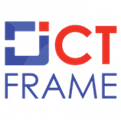21st July 2025, Kathmandu
To ensure the responsible and ethical use of Artificial Intelligence (AI) in Nepali media, the Online TV Journalist Association (OTJA), Nepal, has officially launched its ‘Online TV AI Code of Conduct-2082’.
Online TV AI Code of Conduct-2082
The code was unveiled today at a special ceremony held at the association’s office in Kathmandu, by OTJA President Jeewan Bhandari. The event was graced by the presence of CAN Federation Senior Vice President and IT Policy Coordinator Chiranjibi Adhikari, OTJA Senior Vice President, and other distinguished guests.
Speaking at the event, CAN Federation Senior Vice President Chiranjibi Adhikari emphasized that ethics become even more crucial with the rapid development of Artificial Intelligence (AI).
He seriously addressed the issue of AI misuse in Nepal, particularly through Deepfake technology, and stressed the need for clear policies, laws, and ethical frameworks. “In a situation where Deepfake technology is blurring the lines between truth and falsehood, we must strengthen our ethical boundaries,” Adhikari stated.
Adhikari highlighted that the current era belongs to ‘Prompt Engineering’. “Now, the style of giving instructions (prompts) is the new art of writing code. What kind of instructions you give to AI determines the outcome. This proves that human creativity is still the core power,” he remarked. Referring to the field of journalism, Adhikari said, “Now it’s easier to write news, verify facts, and control misinformation using AI. But truth, accountability, and human values should never be lost.” He concluded by urging for AI to be used for social benefit, not for creating confusion, and emphasized that everyone should use it responsibly and make future generations aware.
The ‘Online TV AI Code of Conduct-2082’ issued by the Online TV Journalist Association has been approved by the central executive committee meeting of the association on Ashar 19, 2082 (July 3, 2025), keeping in mind the essence and objectives of the proposed National AI Policy 2081 (2025). As the first common organization for video journalists on the internet, the association expects this code of conduct to significantly contribute to promoting the proper use of AI in media and minimizing its misuse.
Key Provisions of the Code of Conduct:
The code of conduct is primarily divided into four sections:
a. Regarding Accountability and Transparency:
All materials created with AI assistance will undergo final verification, editing, and approval by human personnel (editors) before publication.
The relevant individual, editor, and institution will take responsibility for content generated by AI.
Clear disclosure will be provided for all content where AI has been used.
b. Regarding Labor, Education, Skills, and Awareness:
The use of AI should enhance journalists’ skills and capabilities, with special attention given to ensuring it does not negatively impact employment.
Caution will be exercised to ensure that the use of AI does not violate anyone’s copyright.
The association will play a leading advocacy role for the ethical and responsible use of AI.
c. Regarding Caution and Grievances:
Special caution will be exercised in adhering to prevailing laws when disseminating information related to personal privacy, character, obscenity, sensitivity, private matters, or security.
AI will not be used to create confusion, bias, or disseminate false information.
d. Regarding Compliance and Revision:
All online TV journalists affiliated with the association must compulsorily adhere to this code of conduct. Its principles will be adopted by all in their own way.
To hold online TV journalists accountable to the code of conduct and enhance the credibility of viewers, readers, and listeners, all members must publish this code of conduct in an easily accessible location on their communication platforms.
All affiliated media outlets within the association must establish a system for addressing and resolving audience grievances related to AI. If grievances are not properly addressed by the media outlet, the association may investigate and recommend action.
This code of conduct will be periodically reviewed and revised as necessary based on practice, experience, suggestions, and technological developments.
As the use of AI continues to grow in Nepali media, particularly in tasks such as data collection, news writing, editing, translation, graphics creation, and video editing, AI has undoubtedly made journalism easier. However, it has also introduced challenges to the credibility, accountability, and responsibility of journalism. In this context, the Online TV Journalist Association’s Code of Conduct is expected to play a crucial role in promoting the judicious use of AI while mitigating its potential misuse.
For more: Online TV AI Code of Conduct 2082
